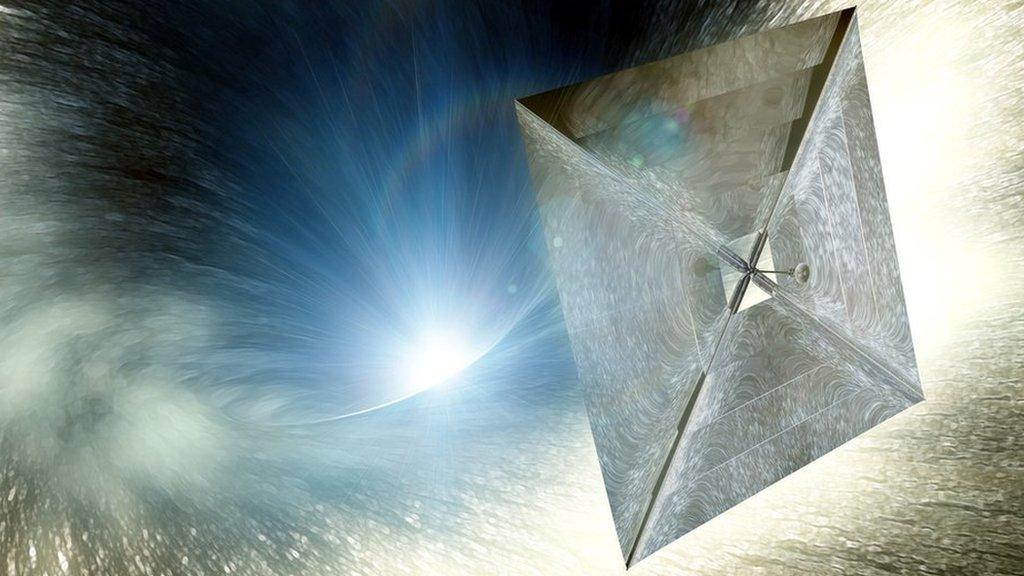International Space Station: First fully private mission has arrived
- Published
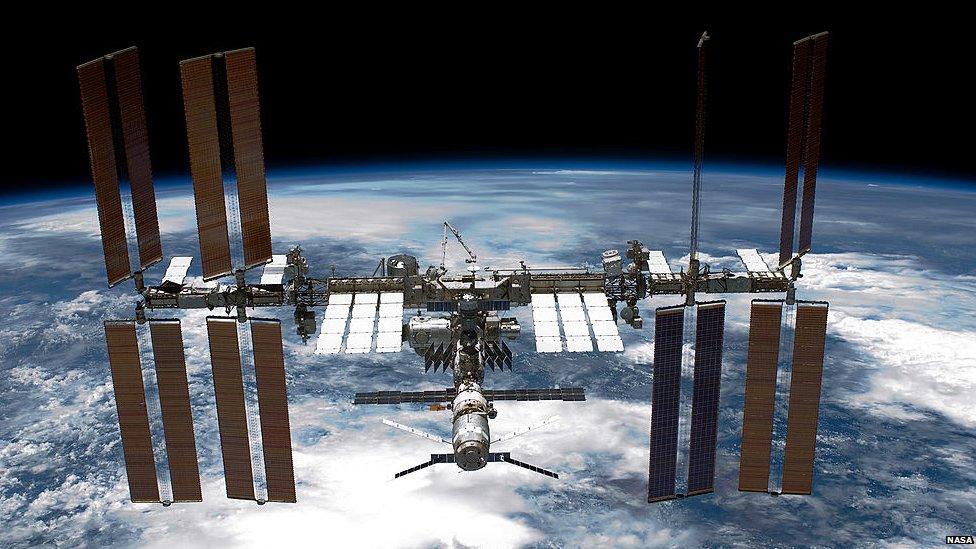
The ISS is essentially a big floating laboratory. Astronauts (people trained in the US, Canada, Europe and Japan to work in space) and cosmonauts (trained in Russia) travel 250 miles above Earth to live, work, and conduct science experiments in orbit.
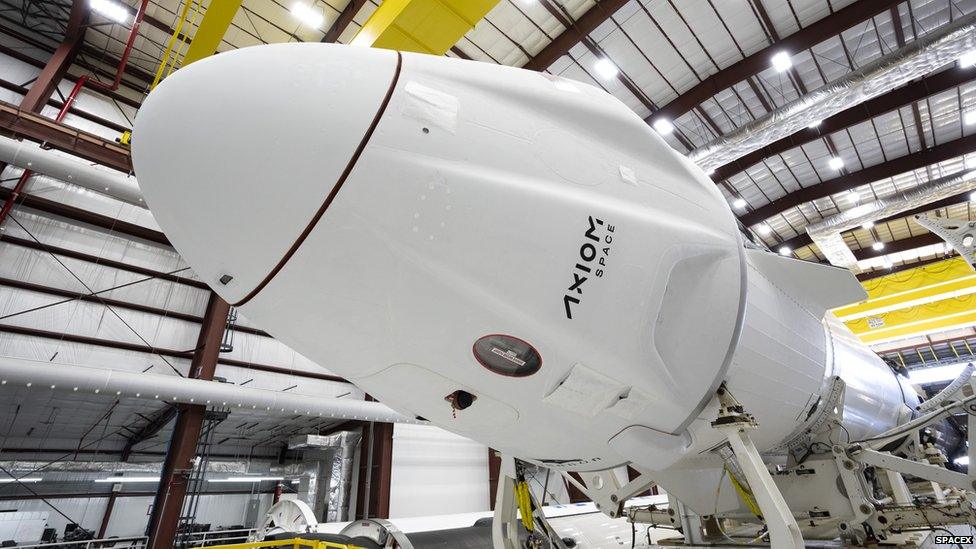
Usually government organisations such as NASA send professional astronauts up there, but now Axiom and SpaceX have clubbed together to conduct a mission with paying customers. This is the Falcon 9 rocket that carried them into orbit.
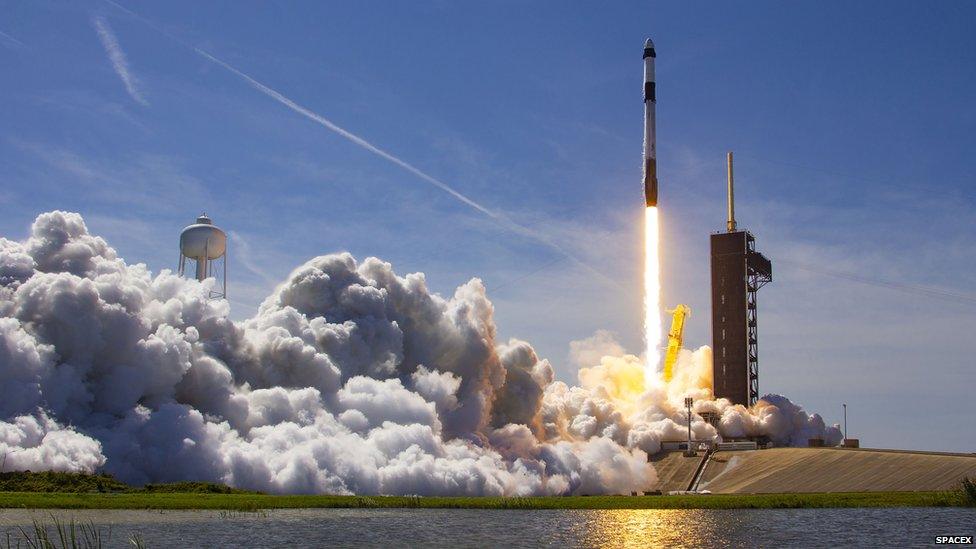
The Falcon 9 blasted off from the Kennedy Space Center in Florida at 11:57 in the morning (which is 16:57 UK time).
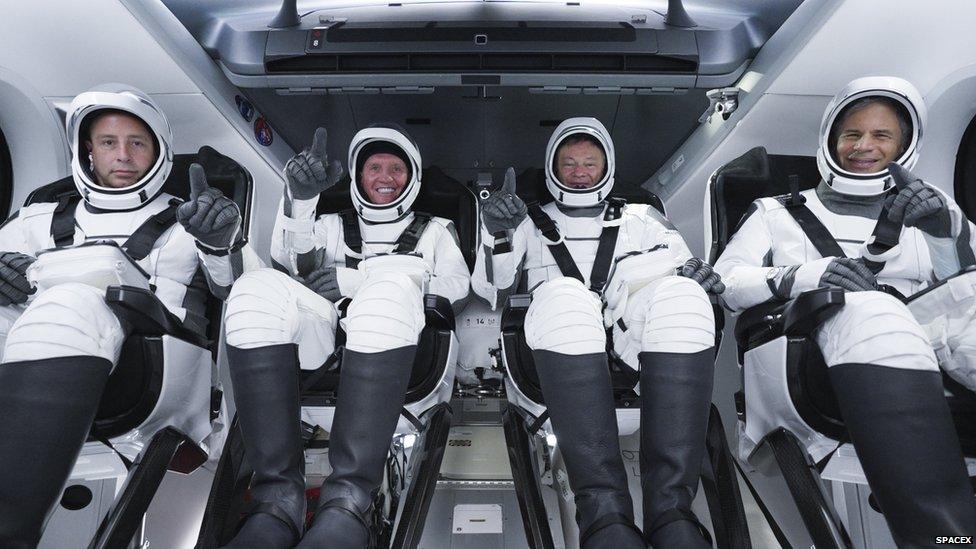
The crew, dubbed AX-1, was made up of an ex-Nasa astronaut (who's now the vice president of Axiom) and three billionaires, who paid a whopping $55 million each for the flight!
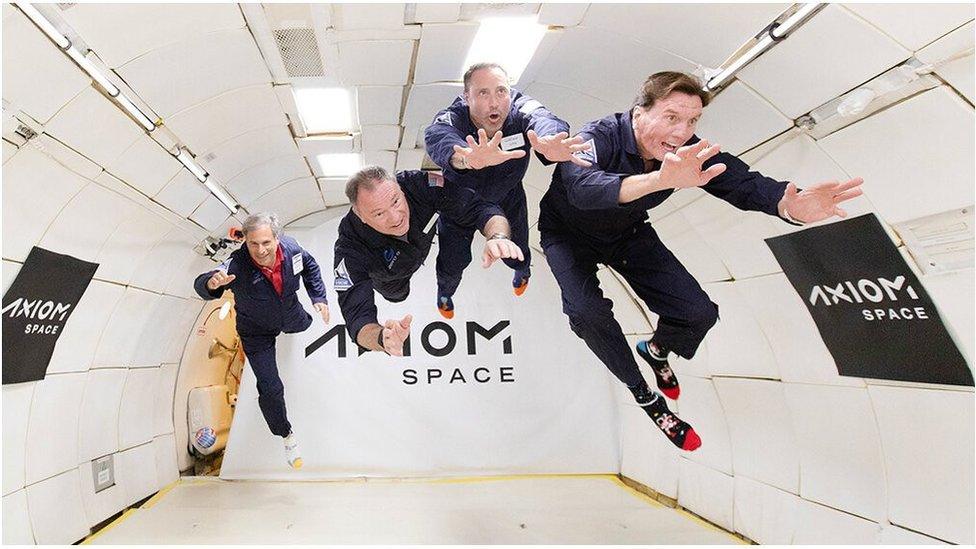
But that's not all - unlike recent short commercial flights into space, the three passengers underwent hundreds of hours of training to prepare them for their eight day long mission. From left to right, you can see Eytan Stibbe, Michael López-Alegría (the pilot), Mark Pathy and Larry Connor.
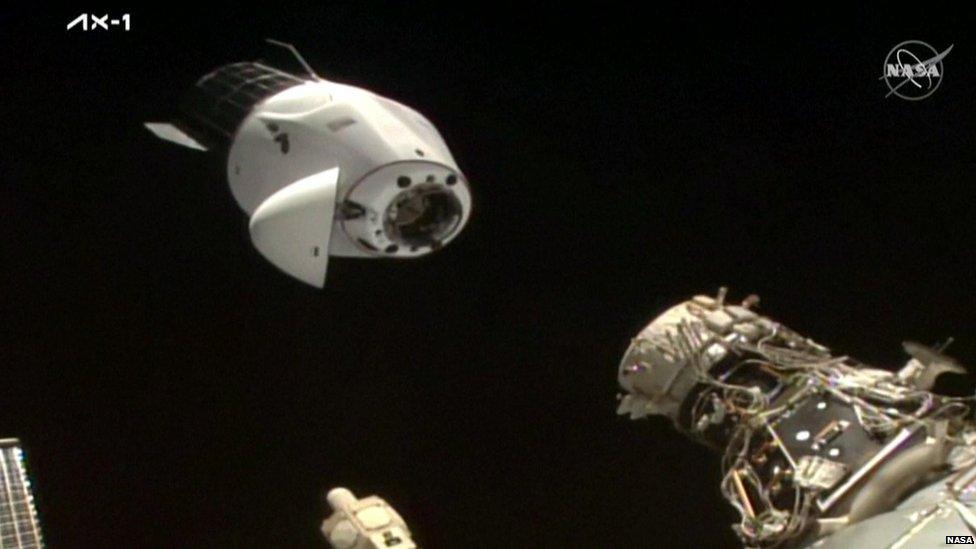
The crew will be conducting lots of experiments over the course of the week.
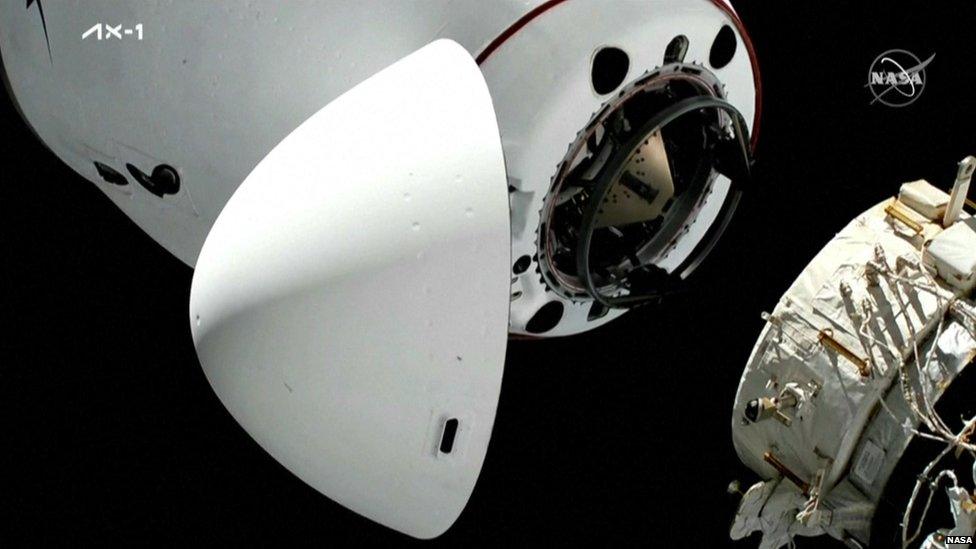
NASA hopes that these types of private missions in low orbit will free them up to focus on more missions deeper in space.
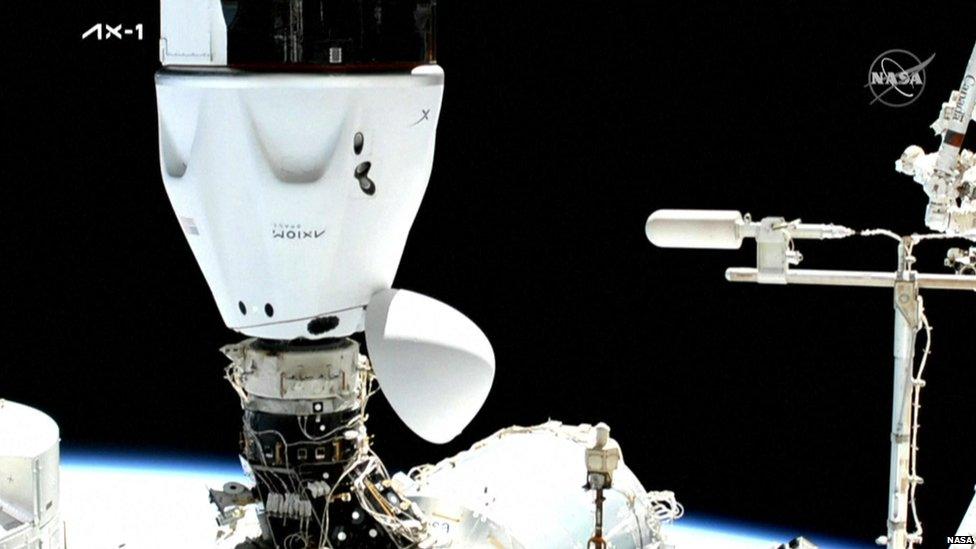
For example, their series of Artemis missions, which are coming up over the next few years, will take them back to the Moon for the first time since 1969, and then out to Mars.
- Published20 November 2018
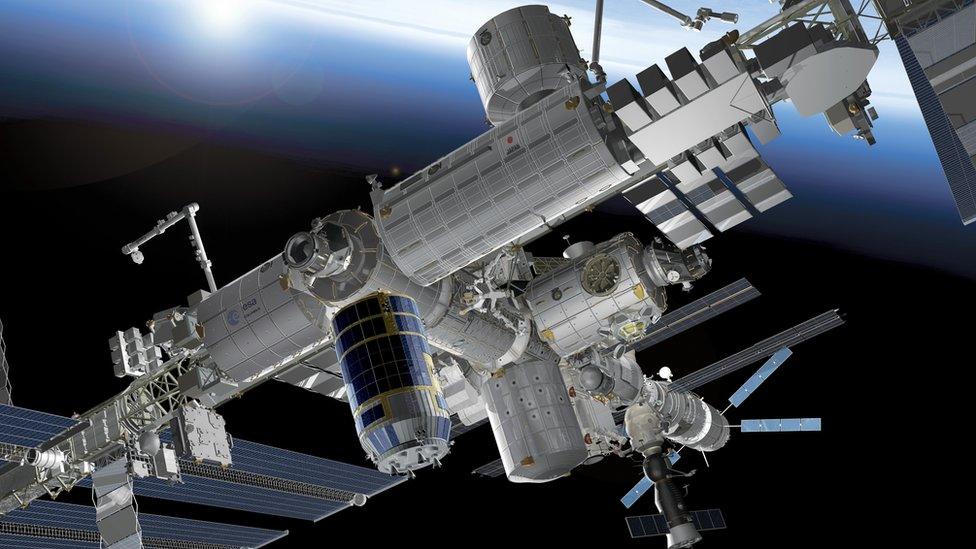
- Published11 November 2021
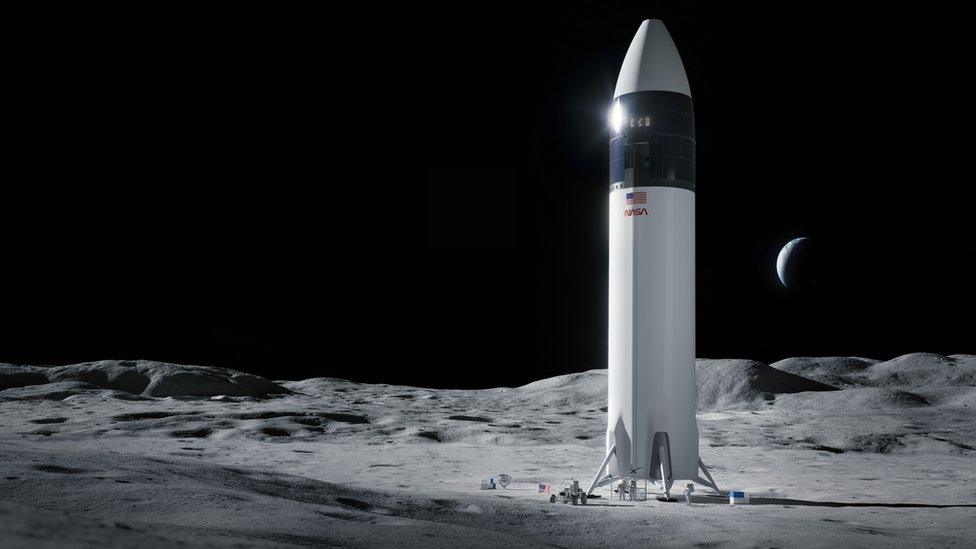
- Published10 April 2022
